
Countries across the world can be measured in both size and population. For example, Russia is the largest country in the world by area, covering a whopping 17.1 million square kilometers (km2) (approximately 6.6 million square miles(mi2)) but is only 9th in population. China, on the other hand, is significantly smaller than Russia (but still very large), yet is home to 1.4 billion people, the highest population in the world.
We usually like to consider countries as large masses of land with smaller settlements in them, like cities, towns or villages. However, there are over 200 countries across the globe and they come in many different sizes. Each country has its own independence, autonomy, and uniqueness, and for many, a diminutive size that can be an advantage. Without further ado, here are the 10 Smallest Countries In the World, from biggest (relatively) to smallest.
10. The Republic of Malta, 122 mi2 (316 km2)
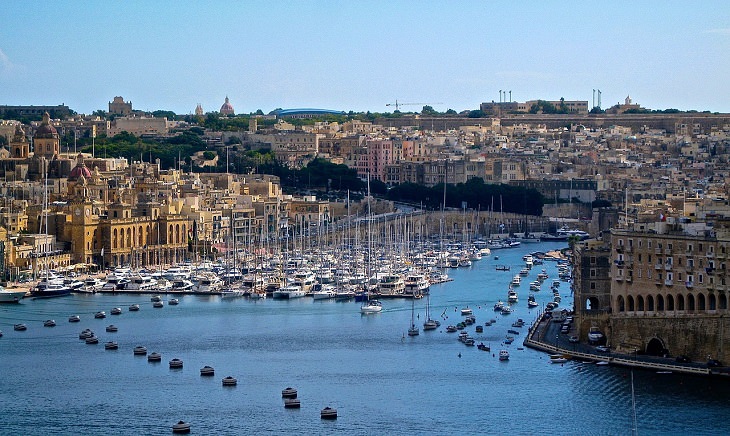
This country is made up of 3 islands off the coast of Southern Italy in the Mediterranean Sea. These islands, namely Malta, Comino, and Gozo, together have 450,000 inhabitants, less than the population of Wyoming.
Its capital, Valletta, is only 0.3 mi2 in size (0.8 sq. km2), making it the smallest capital city in the European Union.
9. The Maldives, 115 mi2 (300 km2)
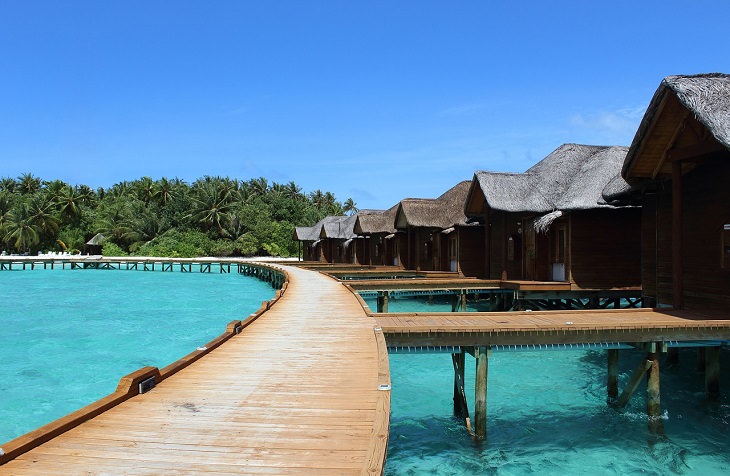
This island country in the Indian Ocean was once home to many colonists like the Dutch and British. It became an independent country in 1965. The Maldives has a population of about 400,000 and a thriving tourism industry.
The main source of income for this island is fishing, and it is well known for its pristine beaches and stunning blue waters. However, concerns have been raised about the rising sea levels off the coast of this country.
8. Saint Kitts and Nevis, 100 mi2 (261 km2)
The Federation of Saint Christopher and Nevis (also known as Saint Kitts and Nevis) consists of two islands. These were among the first to be colonized by Europeans.
As a major exporter of sugar, this country’s major industries are agriculture and small manufacturing industries. It also thrives on tourism and conducts numerous local festivals for tourists to enjoy.
With a population of less than 55,000, the inhabitants of this country maintain a good standard of life.
7. The Marshall Islands, 69 mi2 (181 km2)
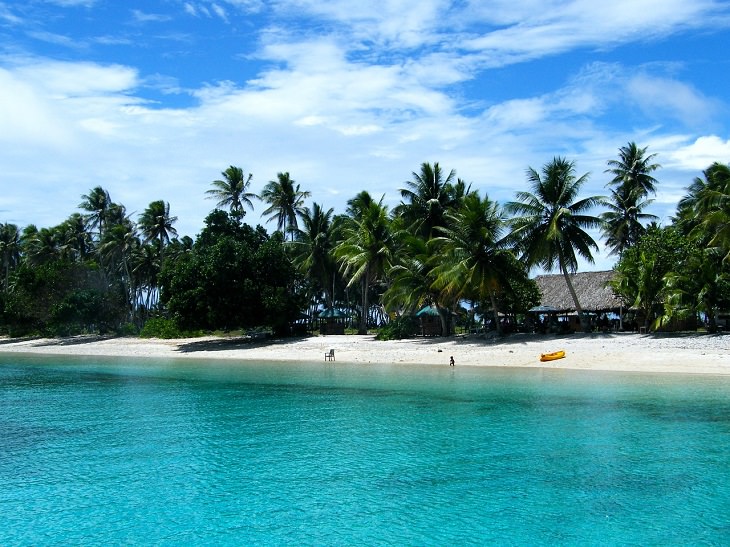
Part of the region Micronesia, this island country is located in the Pacific Ocean. It consists of over 1000 small islands scattered across a span of 70 mi2.
These islands are found halfway between Australia and Hawaii, and they are rich in biodiversity. Over 800 different species of fish and 160 types of corals can be found in these waters.
The island is home to approximately 53,000 people. That’s half the population of the city Boulder, Colorado.
6. Liechtenstein, 62 mi2 (160 km2)

This landlocked microstate (not to be confused with micronations) is found in the Alps, between Switzerland and Austria. With a population of about 36,000, which is less than that of any given city in the United States, this country remained neutral during both World Wars.
It even abolished its army in 1868, 62 years after becoming an independent state. It also has the highest recorded GDP per person in the world and is the 4th smallest country in Europe.
A predominantly German-speaking country, its major highlights are winter sports and the birth of numerous new industries and businesses.
5. San Marino, 23.5 mi2 (61 km2)
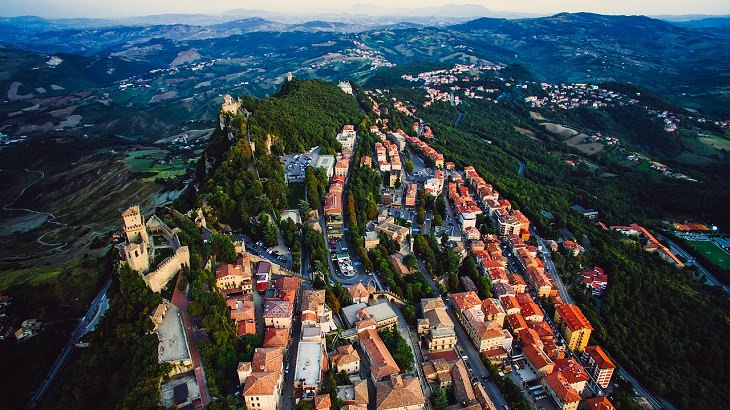
Located in the Italian Peninsula, this is another landlocked country and is home to about 32,000 inhabitants only. Having been founded in the 4th century, it is among the oldest states in Europe and is located on Mt. Titano, in the central northern part of Italy.
Its location makes this country largely mountainous, having its highest point of elevation at 2,477 feet. Again, this small nation leads the world in GDP.
4. Tuvalu, 10 mi2 (26 km2)

A small Polynesian country with only approximately 12,000 to 10,000 residents, made up of 9 islands. Its largest city, Funafuti island, is also the capital of the country and a popular tourist destination.
This country is surrounded by waters padded with corals but has no source of drinkable groundwater like rivers or streams. So the water supply for this country is kept in storage facilities.
It is located in the Pacific Ocean, similar to the Marshall Islands, but closer to Australia.
3. Nauru, 8 mi2 (21 km2)
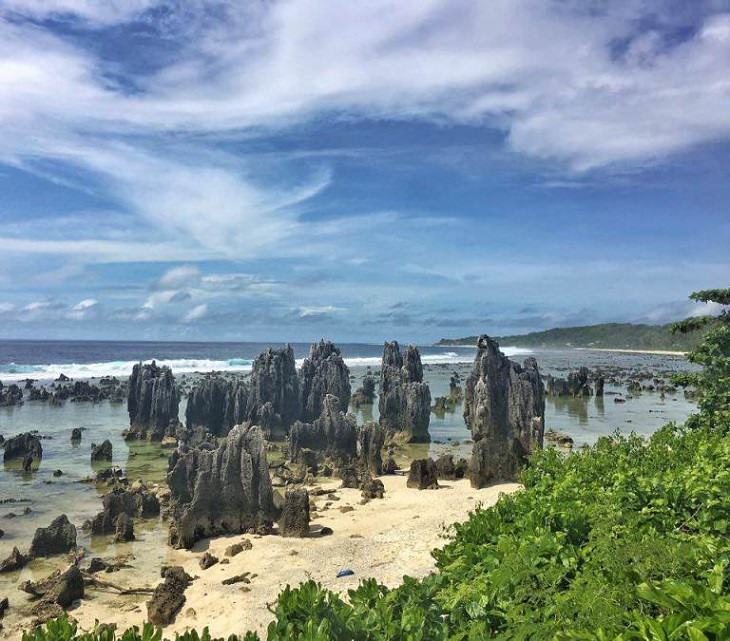
(Nauru, Source: onestep4ward.com)
This island country is yet another destination in the region Oceania, which consists of numerous countries and Republics spread across the Pacific Ocean, like Micronesia, Polynesia, and even Australia.
In fact, it was previously known as Pleasant Island and part of Australia, until 1968 when it became an independent state. It has numerous deposits of phosphate rock, which made it a hub for mining through the 20th century.
2. Monaco, 0.7 mi2 (2 km2)
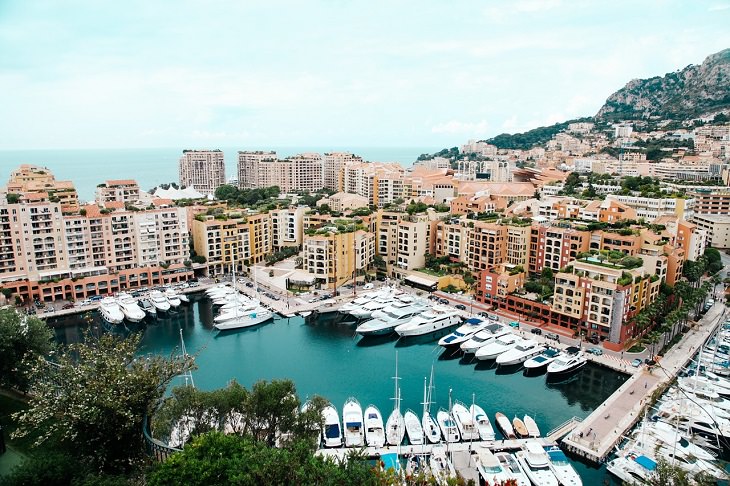
Monaco is a very popular destination, most well known for being the home of the Monte Carlo Casino, and the Formula One race, the Monaco Grand Prix, held on the Circuit De Monaco every year. This also contributes to vintage car museums and other exhibits.
It is surrounded by France on 3 sides and closed in by the Mediterranean Sea. Despite its small area, it is one of the most densely populated countries with approximately 38,000 residents.
1. Vatican City, 0.17 mi2 (0.44 km2)
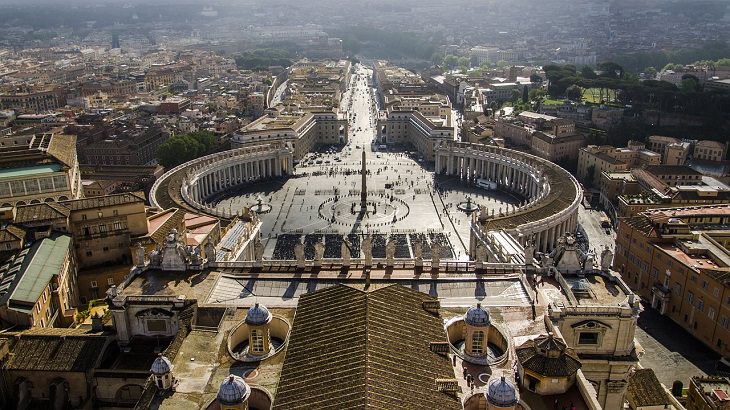
This city is the smallest country in the world and is located within the city of Rome in Italy. It is the smallest in both area and population.
The Vatican has a population of 800 residents, most of whom are clergymen. It is the center of the Catholic Church, the home of many incredible works of art and a major hub for tourism.
Most of the infrastructure of Vatican City has been built around St. Peter’s Square, depicted in the photo.